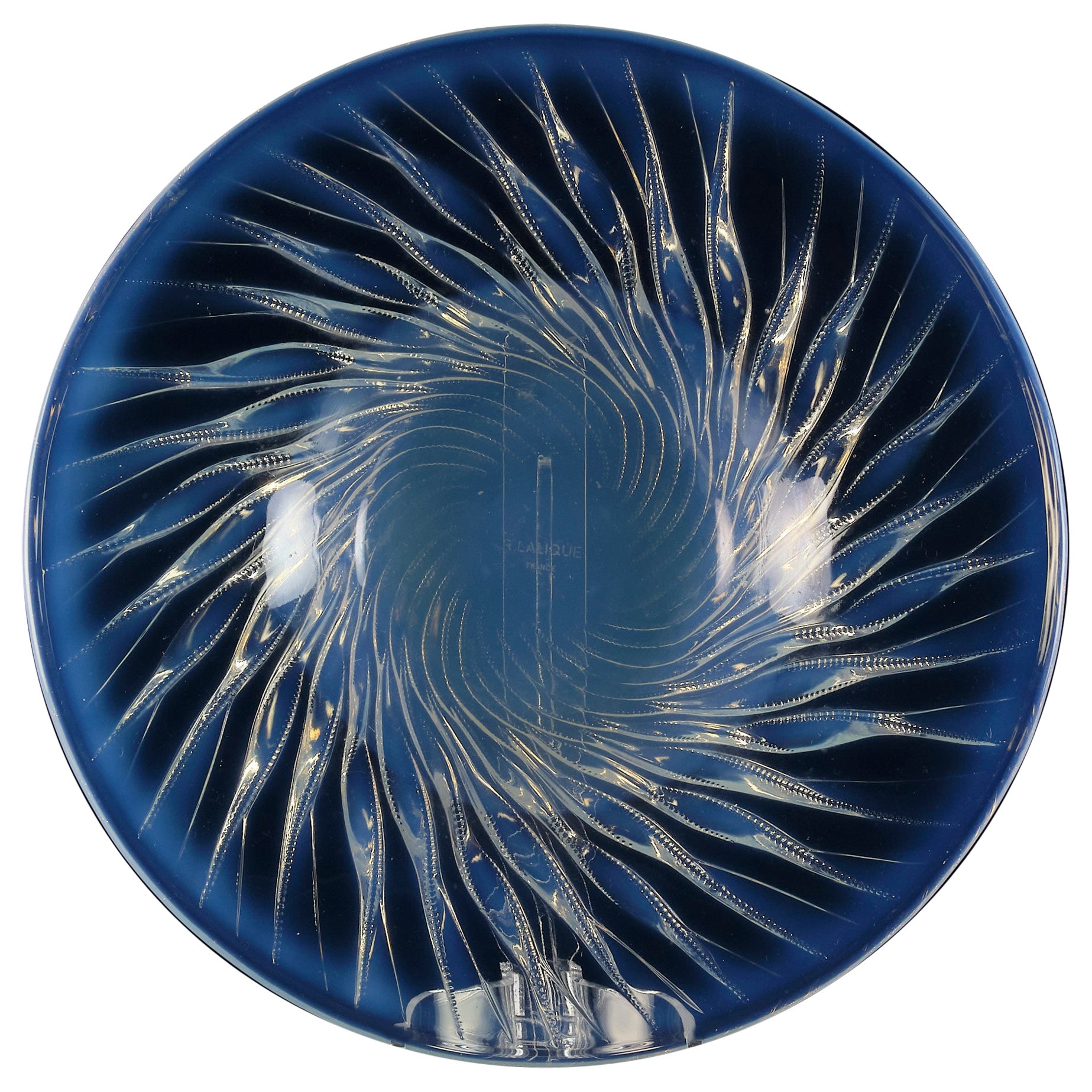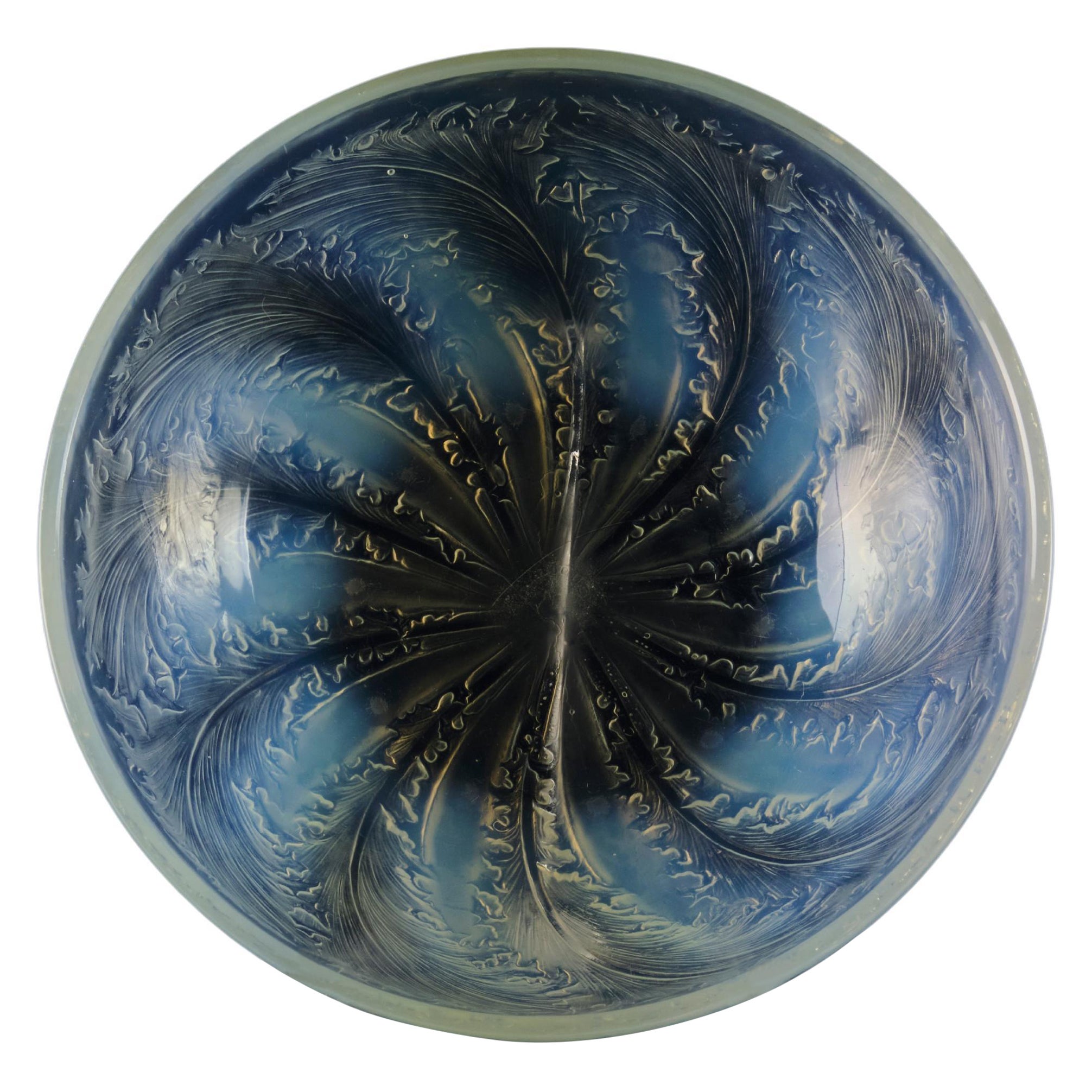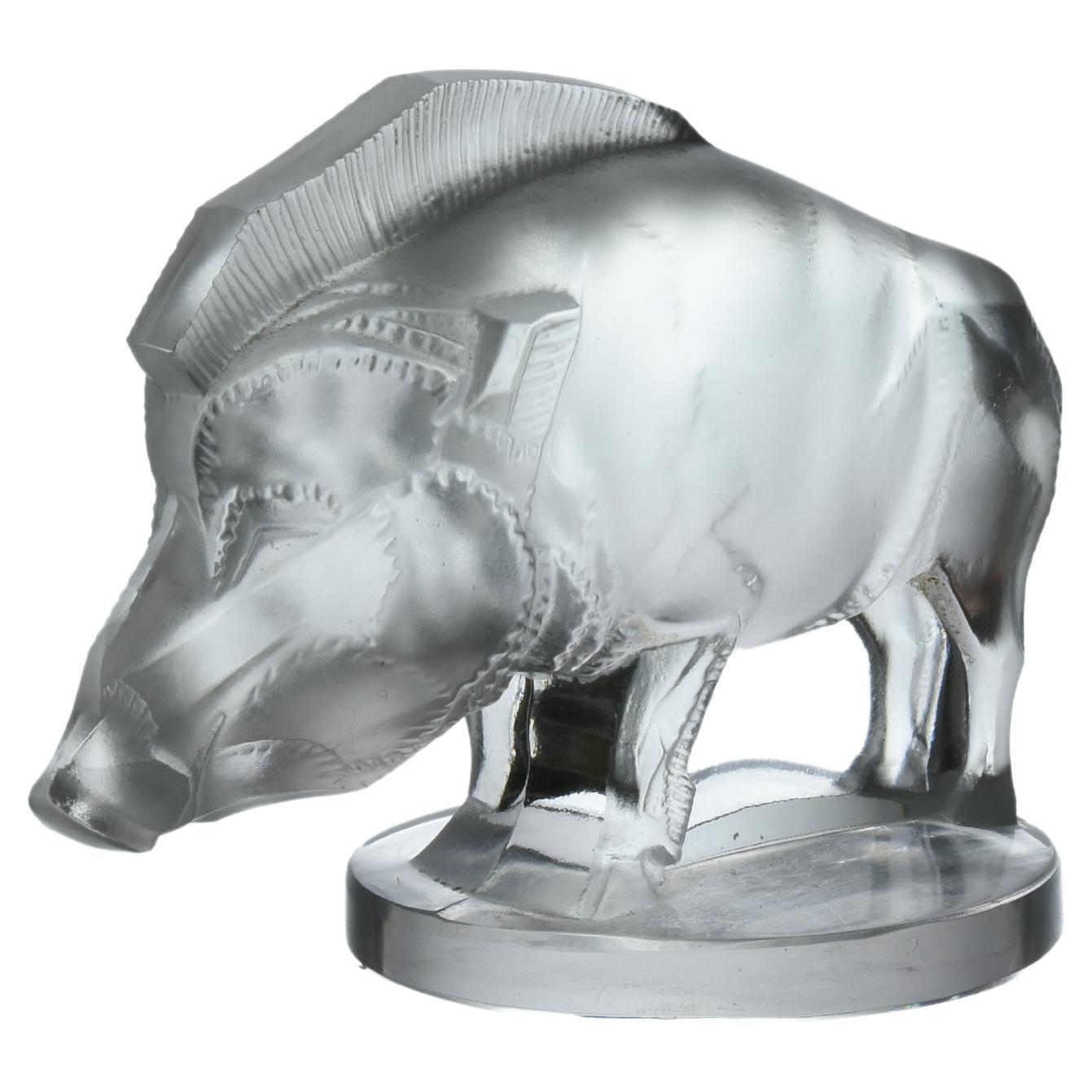Early 20th Century Opalescent Salver Entitled “Sirène” by René Lalique
About the Item
- Creator:René Lalique (Artist)
- Dimensions:Height: 0 in (0.01 mm)Diameter: 14.18 in (36 cm)
- Style:Art Deco (Of the Period)
- Materials and Techniques:Glass,Molded
- Place of Origin:
- Period:
- Date of Manufacture:1920
- Condition:Wear consistent with age and use.
- Seller Location:London, GB
- Reference Number:
René Lalique
The career of the famed jewelry designer, glassmaker and decorative artist René Lalique spanned decades and artistic styles. Best known today for his works in glass, Lalique first won recognition for his jewelry. He was described as the inventor of modern jewelry by the French artist and designer Émile Gallé, and his luxurious naturalistic designs helped define the Art Nouveau movement. Later as a glassmaker in the 1920s and ‘30s, Lalique designed vases, clocks, chandeliers and even car hood ornaments that were the essence of Art Deco chic. Even now, the name Lalique continues to be a byword for a graceful, gracious and distinctively French brand of sophistication.
Born in 1860 in the Marne region of France, Lalique began his career as a jewelry designer in the last decades of the 19th century. His work employed now-classic Art Nouveau themes and motifs: flowing, organic lines; forms based on animals, insects and flowers — all rendered in luxurious materials such as ivory, enamel, gold and semi-precious stones. By 1905, Lalique had begun creating works in glass, and his style began to shift to a cleaner, sharper, smoother, more modern approach suited to his new medium. His Paris shop’s proximity to perfumer François Coty’s led him to experiment with beautiful perfume bottles. He offered the first customized scent bottles, transforming the perfume industry. By the end of the First World War, the artist had fully embraced Art Deco modernity, devoting himself to new industrial techniques of glass production and designs that manifest the sweeping lines and the forms suggestive of speed and movement characteristic of the style. Lalique’s work looked both backward and forward in time: embracing ancient mythological themes even as it celebrated modern progress.
Late in his career, Lalique took on high profile luxury interior design projects in Paris, Tokyo and elsewhere. He designed decorative fixtures and lighting for the interior of the luxury liner Normandie in 1935, and decorated the salons of well-known fashion designer Madeleine Vionnet. Today, Lalique’s influence is as relevant as it was when he opened his first jewelry shop in 1890. In a modern or even a traditional décor, as you will see from the objects offered on these pages, the work of René Lalique provides the stamp of savoir-faire.
- ShippingRetrieving quote...Ships From: London, United Kingdom
- Return PolicyA return for this item may be initiated within 10 days of delivery.
- 20th Century Opalescent Glass Bowl Entitled "Algues Salver" by René LaliqueBy René LaliqueLocated in London, GBAn inspiring early 20th Century Art Deco glass salver decorated with swirling fronds of seaweed around the circumference of the plate, with excellent deep opalescent colour and very ...Category
20th Century European Art Nouveau Decorative Bowls
MaterialsGlass
- Early 20th Century Art Deco Glass Salver entitled Algues Salver by René LaliqueBy René LaliqueLocated in London, GBAn inspiring early 20th Century Art Deco glass salver decorated with swirling fronds of seaweed around the circumference of the plate, with excellent deep opalescent colour and very ...Category
Early 20th Century French Art Deco Crystal Serveware
MaterialsGlass
- Early 20th Art Deco bowl entitled "Chicorée no.1" by René Lalique Circa: 1930By René LaliqueLocated in London, GBAn alluring 20th century Art Deco opalescent glass bowl decorated with a raised design depicting the Mediterranian leaves of a chicory flower. The surface of the glass finely hand fi...Category
Early 20th Century French Art Deco Garniture
MaterialsGlass
- 20th Century Opalescent Glass Plate Entitled "Volutes Plate" by René LaliqueBy René LaliqueLocated in London, GBA striking early 20th Century Art Deco French clear glass plate decorated with a swirling bubbles pattern exhibiting excellent sky blue opalescent colour and fine hand chased detail, signed R Lalique France ‘Volutes’ Catalogue Number: 10-396 Signature identification: “R. Lalique France” stencilled in centre of base Date introduced: April 17, 1934 Dimensions: 27.5 cm Diam ADDITIONAL INFORMATION Diam: 27.5 cm Condition: Excellent Original Condition Circa: 1930 Materials: Clear and frosted Glass Book Ref: R.Lalique – Catalogue Raisonné by Felix Marcilhac Page No. 310 SKU: 6448 ABOUT Lalique Plumes Vase...Category
20th Century French French Provincial Decorative Bowls
MaterialsGlass
- Early 20th Century Art Deco Frosted Glass "Cerises Vase" by René LaliqueBy René LaliqueLocated in London, GBAn attractive René Lalique original Art Deco glass vase decorated with raised fruiting berries around the full circumference of the vase, exhibiting an excellent mix of frosted and o...Category
Early 20th Century French Art Deco Vases
MaterialsGlass
- Early 20th Century Art Deco Glass Mascot entitled "Faucon" by René LaliqueBy René LaliqueLocated in London, GB"Faucon" by René Lalique Dramatic early 20th Century French Art Deco clear glass car mascot modelled as a standing falcon with good hand finished detail, signed R Lalique and France...Category
Early 20th Century French Art Deco Animal Sculptures
MaterialsGlass
- Rene Lalique Opalescent Glass 'Cytise' VaseBy René LaliqueLocated in Chelmsford, EssexRene Lalique opalescent glass 'Cytise' vase, with sepia stained bands. Stencilled makers mark, 'R. LALIQUE FRANCE'. Book reference: Marcilhac 1095.Category
Vintage 1920s French Art Deco Vases
MaterialsGlass
- Rene Lalique Opalescent Glass Moissac VaseBy René LaliqueLocated in Chelmsford, EssexRene Lalique Opalescent Glass 'Moissac' Vase. This pattern features deeply embossed leaves around the sides. Wheel cut makers mark, 'R LALIQUE FRANCE' to the underside. Book referenc...Category
Vintage 1920s French Art Deco Vases
MaterialsGlass
- Rene Lalique Opalescent Glass 'Ceylan' VaseBy René LaliqueLocated in Chelmsford, EssexRene Lalique Opalescent Glass 'Ceylan' Vase. Blue staining to details. This pattern features parakeets, side by side. Wheel cut and engraved ma...Category
Vintage 1920s French Art Deco Vases
MaterialsGlass
- A René LALIQUE Opalescent Glass Bacchantes VaseBy René LaliqueLocated in SAINT-OUEN-SUR-SEINE, FRThe Bacchantes vase was made in 1927 by R.Lalique in white glass. The opalescent version is probably one of R.Lalique's most famous and published vases . This example is in perfect...Category
Vintage 1920s French Art Deco Vases
MaterialsGlass
- Rene Lalique Opalescent Glass 'Feuilles' VaseBy René LaliqueLocated in Chelmsford, EssexRene Lalique Opalescent glass 'Feuilles' Vase. This pattern featues Art Nouveau stylised leaves, in deep relief, around the outside of the vase. Stenciled makers mark, 'R. LALIQUE FR...Category
Vintage 1930s French Art Deco Vases
MaterialsGlass
- Rene Lalique Opalescent Glass 'Raisins' VaseBy René LaliqueLocated in Chelmsford, EssexRene Lalique Opalescent glass 'raisins' vase, with blue stained details. This pattern features deep relief grape bunches, hanging from vines. ...Category
Vintage 1920s French Art Deco Vases
MaterialsGlass






